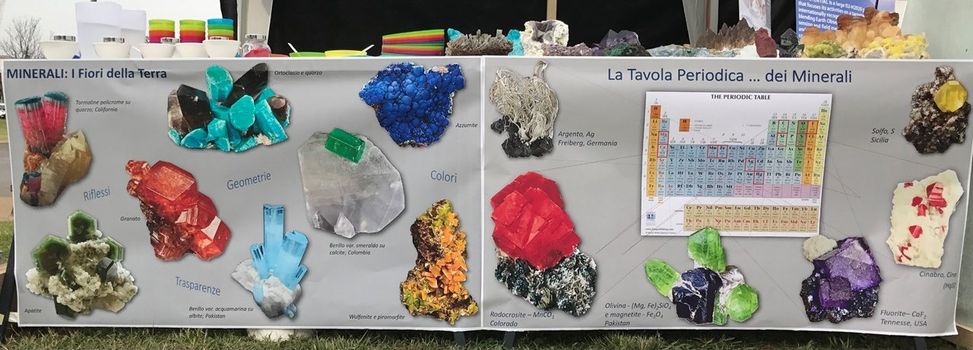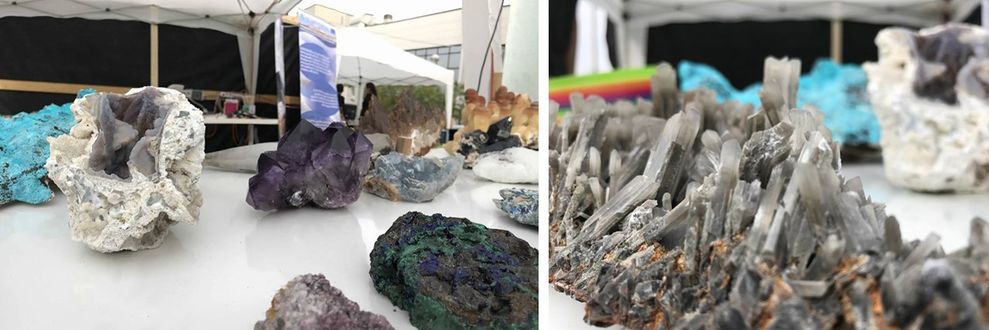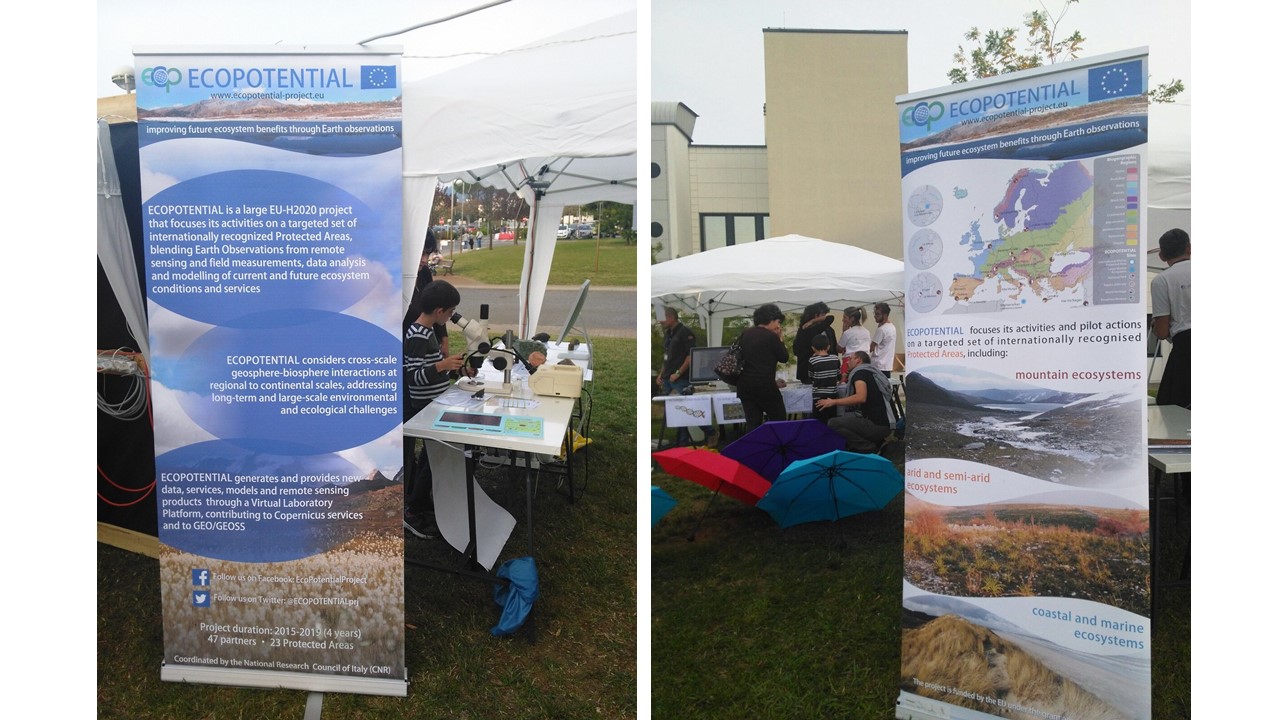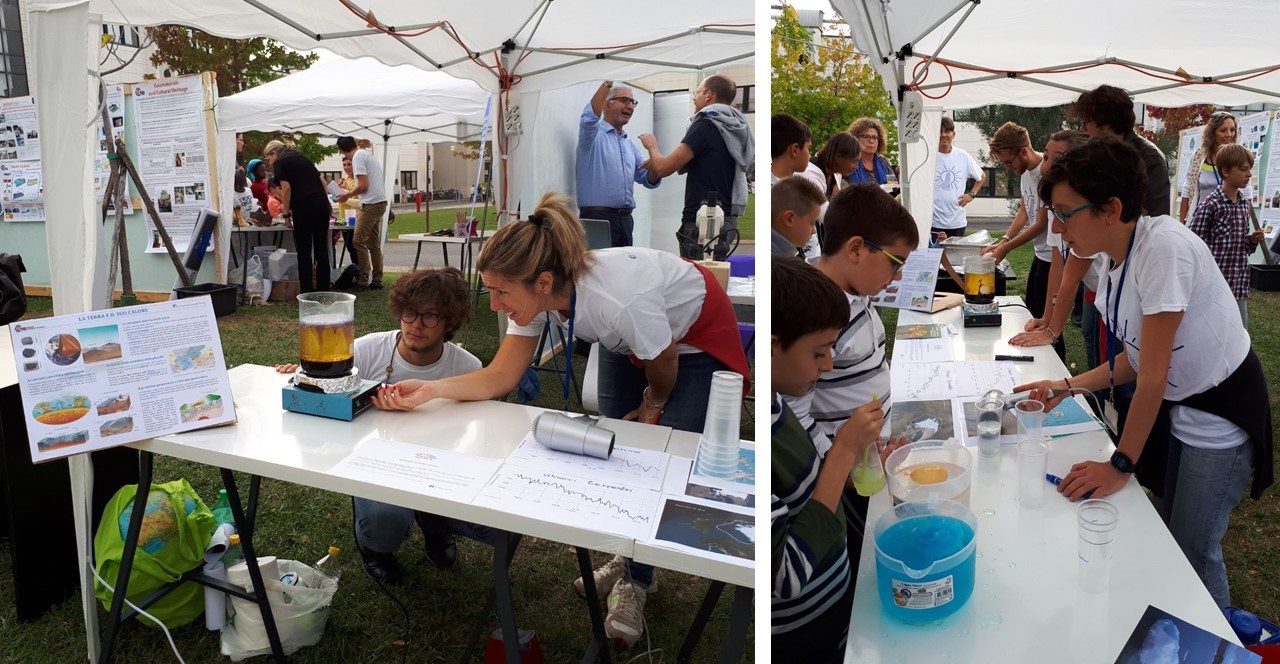BRIGHT 2017
This year, the Institute of Geosciences and Earth Resources, supported the BRIGHT organizing 4 workshops for an adult audience with specific activities for children. Here are some pictures of the event and a description of the proposed workshops:
1. THE WATERS IN ICE WORLD: ADVENTURES TO THE SVALBARD
We discover the ice world together: from the research on Arctic to Bright experiments.
The Arctic is the region of the planet where climatic changes occur more quickly than elsewhere. Global warming has a huge impact on ice-covered areas, particularly on the formation and extension of marine ice, on the retreat of land glaciers and permafrost. We see how ice is formed and how it shapes the territory.
We will try to find out how much an iceberg's volume is hidden under the water ... and if it melts what's happening? Why are glaciers shrinking? Where does their water end?
You can ask questions and share the emotions of the scientific discoveries and the nature of the Svalbard glaciers with stories, photos, models ... and a "taste of ice".
And what happens if ice meets the "fire"? From the ice world to the heat of the Earth: how it comes to the surface and how it manifests itself.
2. THE EARTH SEEN FROM THE SPACE AND THE EARTH CRITICAL ZONE
The researchers will display the images of the living "skin" of the Pianosa Island and the Alpine pastures and you can try to measure the "breath" of the soil.
Our planet is our home and we have to take care of it, because it could continue to host us. For millennia, the human activity has been causing important changes into the “Earth’s critical zone”, that is the outer layer of the Earth's surface from the tops of trees to the soils, the rocks and aquifers.
All processes, fundamental for the ecosystem’s life and human society, take place in this zone. Anthropogenic and natural changes in the Critical Zone can be observed and studied both from “remote” (e.g. through satellite observations) or “in situ” (e.g. through sampling and measurements with probes).
Researchers from the Institute of Geosciences and Earth Resources will show you how the data from the satellites are used to study the terrestrial ecosystems. Explanations are provided by posters, brochures and the interactive scientific game developed within the H2020 "ECOPOTENTIAL" project.
3. THE ISOTOPE WORLD
Do you know that you breathe different oxygen-types? And that sulfur from the volcanos is not always the same as well as the carbon in the diamond?
All organic and inorganic matter has its own fingerprint: the stable and radiogenic isotopes. Isotopes are everywhere: in the air, in the water, in the stones, in the food, in our bones…
What are the isotopes?
They are atoms of the same elements (ISO – TOPOS: same place in the periodic table) having different numbers of neutrons in the nucleus and different atomic weights. On the 89 stable elements, less than 20 have a single isotope; the remaining elements show from 2 to 10 isotopes.
We will discover the most important isotopes in nature and their distribution in superficial and deep Earth. Understanding the rules determining the isotopes distribution allow the geologist to understand the magma formation, date rocks, identify groundwater reservoir etc. etc.
To study isotopes needs the mass spectrometer, very precise and sophisticate instruments that, utilizing electrical potentials, magnetic fields and electrical charges separate and count the isotopes of the elements. Continuing a long scientific tradition, the Institute of Geosciences and Earth Resources has acquired a mass plasma mass spectrometer of the last generation that will allow significant analytical advances for new applications in the geological field as well as in research areas, that will range from medicine to goods cultural, food traceability, etc.
4. THE COLORS OF THE EARTH
Artistic masterpieces of nature, indispensable raw materials, pigments for artists, jewelery of exceptional beauty … minerals always attracted the humans interest. Mineral pigments were placed on the palette of each artist: brown and orange from the iron oars, green from malachite, red from cinnabar, light blue from azurite, white from cerusite. Minerals make up the rocks that lie beneath our feet; there are over 4,000 mineralogical species found in nature. Researchers at the Institute of Geosciences and Georisorse (CNR) study these minerals every day to decipher the geological history of our planet. The researchers will accompany you on a journey of discovery of the Mineral Kingdom, playing with minerals, brushes, pigments, bonding Science and Art.
From the mineral selection, to the crystals powdering, to the mixing with organic binders, visitors will learn to touch, see, "listen" and smell the minerals during the process of transformation from crystal, pigment, to tempera color, ready for use. The laboratory experience is divided into three parts: 1) choice of minerals and pigment preparation; 2) tempera color preparation; 3) realization of a personal painting (from Keith Haring painting).




